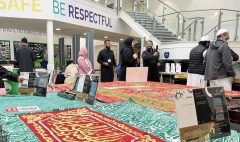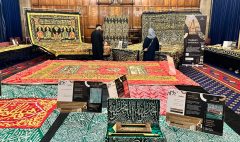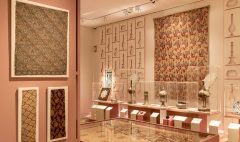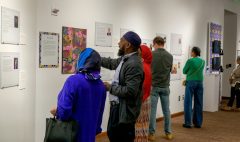Anida Yoeu Ali’s art against Islamophobia
July 3, 2024 2024-07-08 10:11Anida Yoeu Ali’s art against Islamophobia
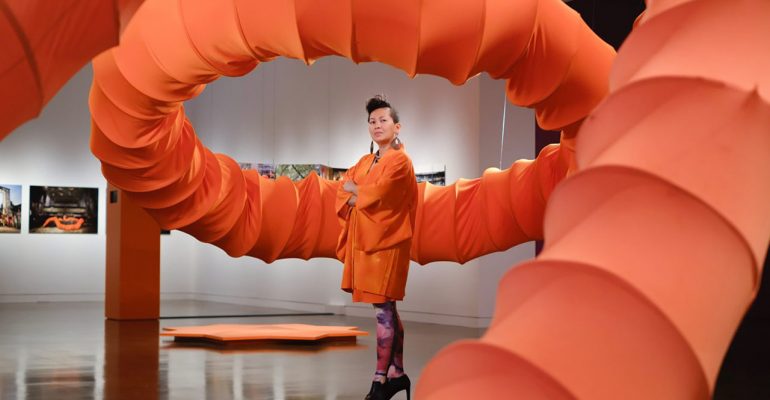
Anida Yoeu Ali’s art against Islamophobia
Hybrid Skin, Mythical Presence at Seattle Asian Art Museum is a multifaceted response to forms of othering.

Pulsing music emanates from within a curtained-off gallery in Anida Yoeu Ali’s exhibition at the Seattle Asian Art Museum. Behind the curtains, the video Genesis 1 (2021) plays. ‘The Red Chador lives and rages on. My existence is an act of protest and defiance because I refuse to disappear,’ a text across the screen reads. The video sets out a mythos for The Red Chador, one of Ali’s performance personas.
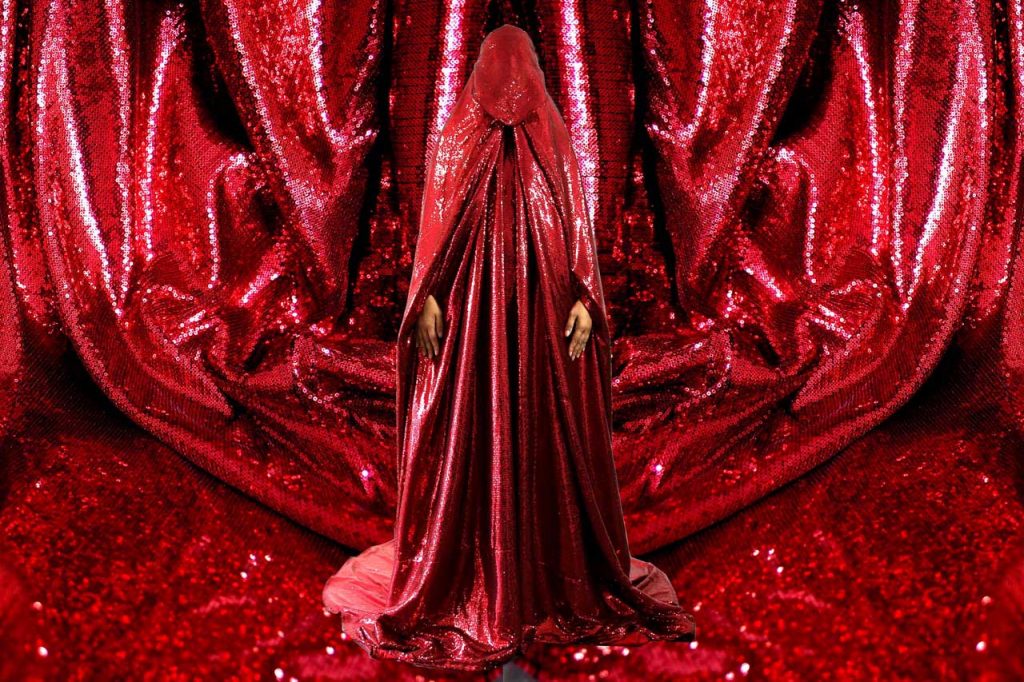
While a chador, a full-body cloth often worn by Muslim women, is commonly found in darker colors like black or blue, Ali’s is bright and sequinned, both regal and campy. In the film, there is a surreal montage of Ali as The Red Chador emerging from the ocean, and urban scenes of other chador-wearing dancers in a rainbow of colors. Genesis 1 is, in part, provoked by the Cham-Muslim, Cambodia-born artist’s experience with Islamophobia while boarding an Israeli airline to the US in 2017. She was strip-searched and threatened with deportation; while detained for four hours, border officers repeatedly asked why her last name is Ali; the original Red Chador piece was mysteriously missing from her luggage when she arrived in the US, and never seen again. So, in Genesis I The Red Chador, returning as if reborn from one nontraditional bright color into many, reads as a refusal of oppression through multiplicity.
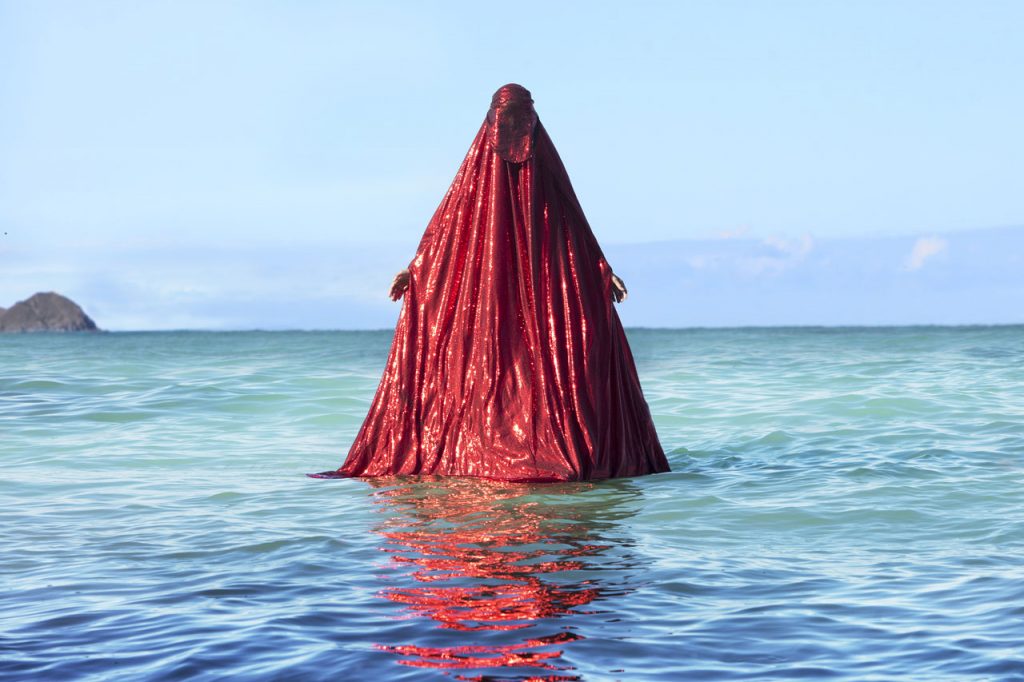
There are photos of The Red Chador’s first performance, in 2015 at Paris’s Palais de Tokyo where, in an at once humorous and deadly serious commentary on Islamophobia and colonization, the character threatened to execute a baguette every hour. Ali’s work draws on her own cultural background – Cham is a layered, multilingual identity with Buddhist, Hindu, and Muslim influences, spread across the national borders between Malaysia, Thailand, Vietnam and Cambodia – while also looking to confront and subvert stereotypes of Southeast Asian communities. As such, her performance personas are a multifaceted response to forms of othering: at once looking to add nuance to an American audience’s understanding of her origins, whose common first reference to her world might well be the 1975–79 Cambodian Genocide under the Khmer Rouge, while also opening up space in which to critique misogyny within the Muslim community.
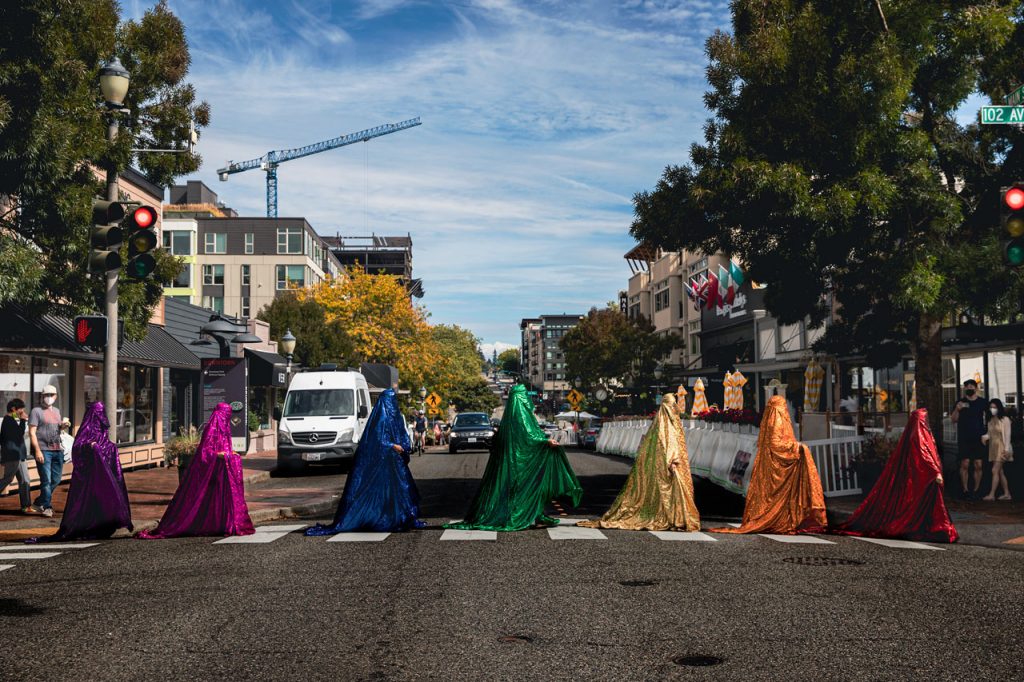
Based in the adjoining city of Tacoma, Ali is surely aware of the ways in which Seattle’s intricate overlap of cultures and spiritual communities nonetheless often remain segregated from more central, monied and white neighborhoods. In February of this year in Seattle, a Muslim woman was assaulted at knifepoint, her hijab forcibly removed in a suspected hate crime. Throughout the United States, during the current Israel–Hamas conflict, reports of anti-Muslim attacks have increased. Before the opening of the exhibition, Ali’s professional website was hacked and she received personal and anti-Muslim threats via social media. It is in this environment that in early June Ali held her latest performance, The Red Chador (Afterlife) (2024), a daylong procession through key landmarks of downtown Seattle. Beginning at the Seattle Asian Art Museum in Volunteer Park, the performance travelled through the Westlake Center mall to the city’s iconic Space Needle, then through the Olympia Sculpture Park, along the downtown waterfront and finally to the Seattle Art Museum.
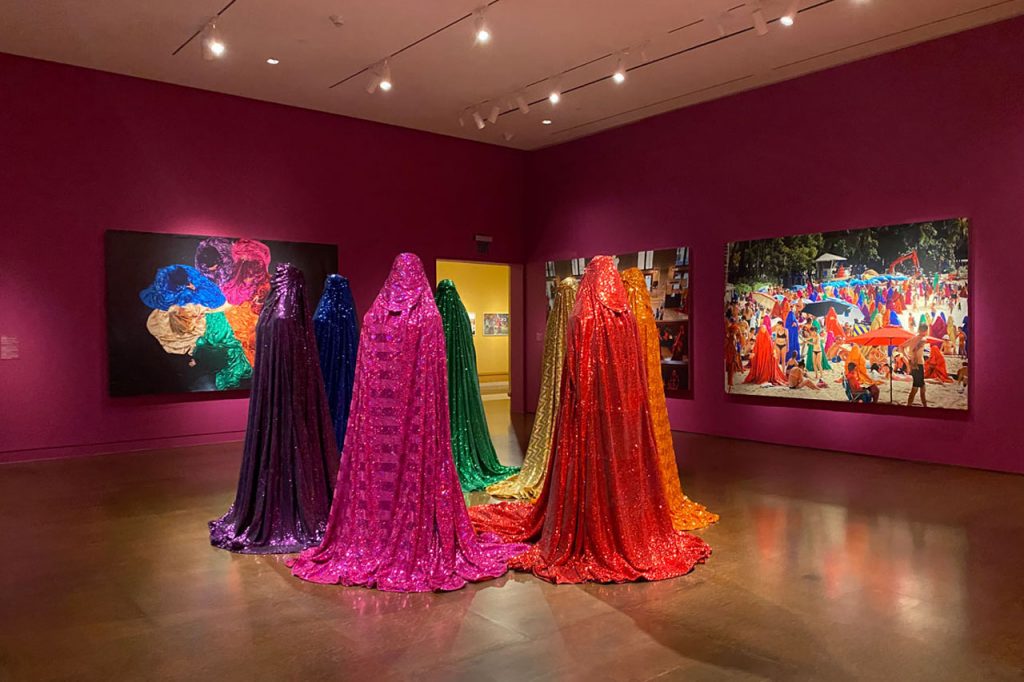
The final stop is the Seattle Art Museum. After processing through the galleries, the Chadors sit on the floor in a circle in the main lobby, then they remove their veils to reveal relieved and appreciative smiles. The overall aura is exhaustion and satisfaction. While sitting among Chadors, the remaining audience members speak of feeling inspired, and of having learned about the connection between Ali’s perspective and the contemporary moment. The method of Ali’s performance could be said to match that of her own lived experience: different realities, no matter how irreconcilable they seem, are understood as cocreated.
Read more at: ArtReview.com


